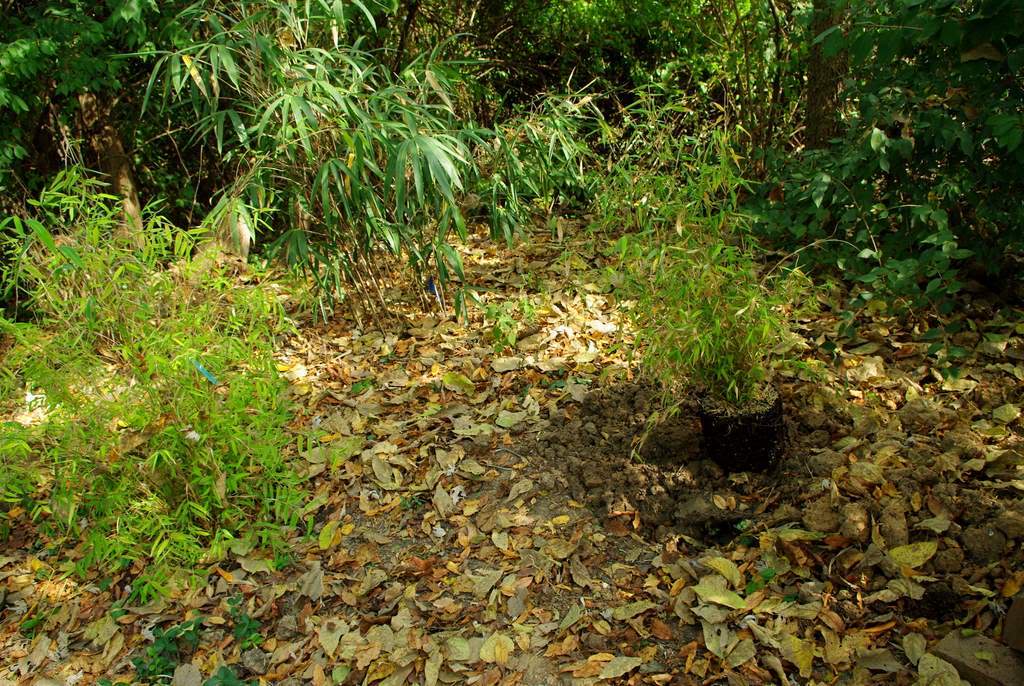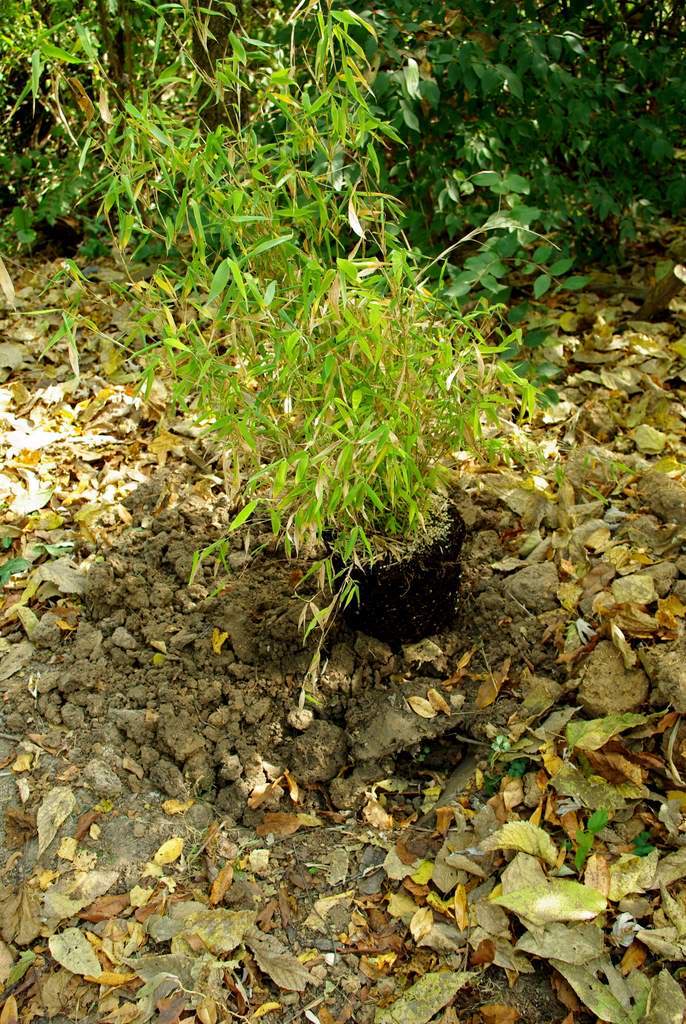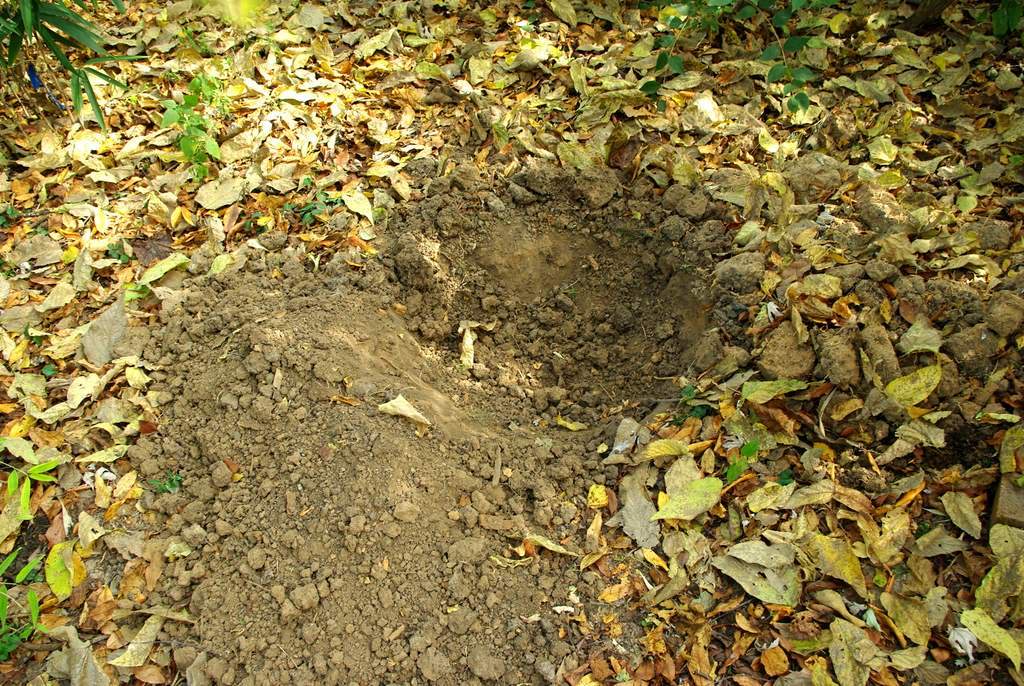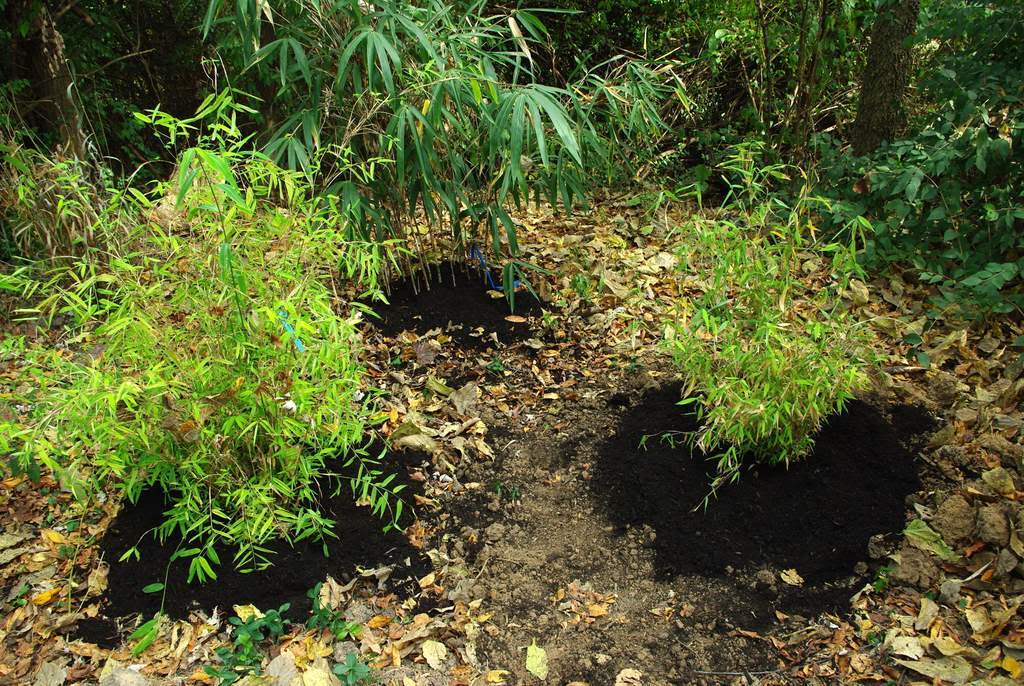Yesterday I wrote about planting the first of my two new clumping bamboos. Today I tackle the second one, the Fargesia murielae.
This one is going to be a snap compared to the first one, as there are no weeds to clear or stumps to remove.
I'm not really sure if this is a temporary spot for this plant, or if it will stay here for several years, but I decided to put it next to the Fargesia denudata that I planted earlier this year.
It's just sitting on the ground as I decide where exactly to place it.
I want to have both of these in the same area so I can compare their cold-hardiness, heat tolerance, and just general performance.
Although all I need to do is dig a hole here, the soil is very hard, dry, and compacted. Nothing at all like the powdery, loose soil I encountered yesterday.
You can see that I'm just digging up rock-like chunks of soil, which I then need to whack a few times with the shovel to break up.
What's the answer to hard, dry soil like this? Compost, of course. Before I add it though, I want to remove all of this somewhat-loosened soil so I can break up the soil in the bottom of the hole -- it's so hard here I want to give the bamboo as much help as possible in establishing.
I always find it interesting that no matter how hard and dry my clay soil is, the earthworms seem to have no trouble moving through it. Here's one curled up in a little "den":
I wish I knew more about why they hole up in these little "caves". Do they know that the soil is getting dry, so they make this chamber to wait for more moisture? Do they always make these holes? Only when they're immature? Too many questions, and I need a good earthworm reference (or expert) to get the answers.
So with the hole prepared I'll put the plant in, then mix compost into the fill soil, which I'll push around the rootball.
I love the way that my soil looks after I mix compost into it. It looks so dark and rich -- it's hard for me to accept the fact that there are many areas of the country (and world) in which all of the soil looks like this without amendments. If you have rich, loose soil like this, you're a lucky gardener!
So the plant is now in the ground:
A little compost mulch, a little water, and this job is finished:
Since the new bamboo (Fargesia murielae) doesn't look "perfect", and the bamboo that was already in the ground here (Fargesia denudata) also was looking a little worn down before I put it into the ground, this area doesn't look too lush right now. I'm hoping these two make it through the winter without any problems (I may help them a bit by tarping over them), and next spring they add several new culms each and really leaf out.
As I've said before, I'm always excited to see what these and my other bamboos will do next year.










Great post! We have the same clay soil, down to the small earthworm pockets, so I know exactly what you're talking about. I usually toss the largest clods of clay into a back corner of our yard, and in the fall I dump leaves on the pile. My hope is that in a few years I have amended soil I can re-use.
ReplyDeleteIf the clods won't break up easily when I hit them with the shovel, I'll do the same thing -- put them in a pile somewhere and use it again next year if needed. These crumbled pretty easily though. Clay soil has such different qualities depending on how much moisture it contains.
ReplyDelete